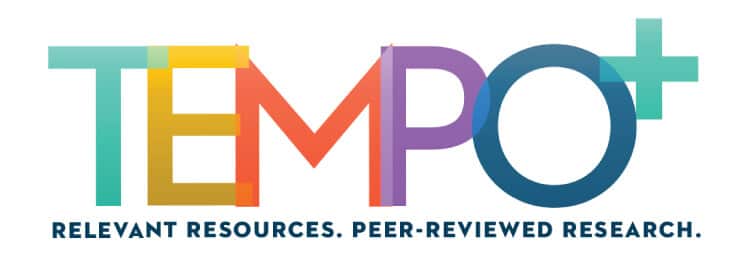Let’s start at the beginning as we examine advocacy: What is advocacy? What goals do advocates for gifted education have? Who can advocate? What are important points to remember in order to enhance the effectiveness of advocacy? What advocacy lessons can be instructive to those who plan to advocate in gifted education? What role do advocacy organizations play in advocating for gifted education? These questions will be examined and answers will be described in this article—a primer for effective advocacy.
Advocacy: What Is It?
Advocacy (n.d.) is “the act or process of supporting a cause or proposal.” The National Association for Gifted Children (2000) described advocacy as “the act of arguing in favor of something—an idea, cause, or policy” (p. v). The idea, cause, and policy that provide the focus for advocacy are selected to advance opportunities for gifted students to learn at levels that encourage making continuous progress and/or that provide the appropriate environment to enhance positive social and emotional well-being.
When advocating in gifted education, the goal is often legislation or policy for addressing the needs of children who are gifted and talented, needs often created by their strengths. Advocacy can also be for a practice that will facilitate one child or a group of children having the opportunity for making continuous progress in school, removing barriers that keep a child or children from learning above grade level when they are ready for higher levels of learning.
Advocacy can focus at the school, school district, state, and national levels. Advocacy occurs at different levels with the greatest impact on children and young people when it is at the highest level. Often advocacy gathers momentum at one level, and then it moves to a higher level. Advocacy also may begin at a state or national level with the goal of changing policy and enacting legislation where the impact will be greatest.
Who Can Be an Advocate?
All parents and educators can be advocates for an individual gifted child and for gifted children in general. In their capacity as caring adults, they may speak out to support appropriate educational opportunities for all children with ongoing opportunities to extend learning for those who are ready to learn more complex concepts and at a pace beyond what works for most students. “Gifted children have the right to learn something new every day” (Siegle, 2007). A similar message is conveyed in the title of an article by Julian Stanley (2000), “Helping Students Learn What They Don’t Already Know.” Continuous progress is the learning goal for all children and young people, including those with gifts and talents.
Sometimes there are restrictions that limit in what situations an educator can advocate. If that is the case, the educator still can provide information and research to support parents and other citizens who speak out on behalf of children and young people with gifts and talents and opportunities for them to learn on an ongoing basis. There are many citizens who support appropriate educational opportunities for gifted children (Jones & Gallagher, 2019).
All educators and those who make decisions with regard to learning should keep advanced learners in mind when planning instruction. Ongoing advocacy should occur with educators and other decision-makers who influence education. A good way to keep the focus in decision making on the academic and social-emotional needs of advanced learners is to ask two questions (Plucker, Burroughs, & Song, 2010):
- How will this [decision] affect our brightest students?
- How will this [decision] help other students begin to achieve at higher levels?
If these questions were consistently posed, there would be fewer barriers to high-level learning and there would be less need for professional learning to educate various role groups about the myths that are often believed by well-meaning educators and citizens.
Goals for Advocacy in Gifted Education
Often advocates start with an educational need they see for their own children or a group of children. When that is the case, the advocacy begins with talking with the teacher and/or the principal, curriculum coordinator, gifted resource teacher, or gifted coordinator. In this situation, the goal is to pave the way for ongoing learning for a child who is facing a barrier to making continuous progress. Such barriers include keeping all children in a particular grade learning at the same level and policies that limit who can participate in advanced classes (e.g., advanced math classes are only for students in certain grades) or that do not allow any exceptions to the birthdate of a child entering school.
Goals for advocacy in gifted education may include a practice to advance a child or children, a policy, legislation, or a special school. The quickest result comes from advocating for a practice or advancement of a child or a group of children as that decision can but will not necessarily be made right away; however, the most long-lasting change will come from policy and legislation that change practice, getting rid of the need to advocate on a child-by-child basis each year.
Sometimes, advocacy is all about educating classroom teachers, teachers in specialty areas, counselors, or school administrators that gifted students have real needs and to help them see past stereotypes about those with gifts and talents. This type of advocacy must be ongoing.
Roberts and Siegle (2012) stated that teachers and parents can advocate for a variety of goals:
- Advocating with grade-level teachers to differentiate instruction to meet the wide range of student needs,
- Advocating with all educators and parents for specific services and best practices for gifted students at the school level,
- Advocating within the community for greater school district-wide services for gifted children,
- Advocating for state support in legislation and policy with funding for gifted education, and
- Advocating for national attention on gifted education (both legislatively and with the general public). (p. 59)
The goals for advocacy can vary based on the level at which advocacy is focused and on the situation at that particular time. “The overaraching reason to advocate is to ensure that gifted children are learning on a daily basis in classrooms and schools that respect difference” (Roberts, 2018, p. 453).
Key Points in Working Toward Effective Advocacy
Working toward effective advocacy can take various pathways; however, there are recommendations to guide effective advocacy (listed as the sections below). It works better to start at the beginning of these recommendations by building relationships, but advocates may have situations that require a different order. For example, it may be too late to build relationships before they are needed. The following points are put together for individuals and groups who are planning to advocate and are based on experience advocating as individuals as well as in groups.
1. Build Relationships Over Time and Before Needed
School board members as well as state and national legislators respond to those who elect them. They want to know what those who elect them think, so it is important for citizens to let them know what their interests are. It is important to schedule times to meet with them and to let them see advocacy for excellence in education is a major focus, including policies and legislation that support advanced students learning on an ongoing basis.
When it is time for a vote or a decision to be made, do decision-makers know where you stand on a particular issue? It is so important to build relationships before they are needed, and relationships that matter are built over time. An example of such a relationship is shown by a state commissioner’s reply to an advocate saying, “Don’t forget gifted children when you set legislative priorities.” His response was “I won’t, but you wouldn’t let me if I did” (J. L. Roberts, personal communication, July 6, 2019). It is also key to know with whom key decision-makers are friends. Who went to school with him? Who is her next-door neighbor? In a pinch, that information about who knows whom can be invaluable in getting a personal conversation to boost the advocacy goal.

2. Tailor the Advocacy Message
The message of advocacy plans must be tailored to be readily communicated by various advocates and understood by those to whom the message is shared. “Advocacy messages are designed to open the door to conversation about an issue: effective messages immediately capture sympathy for a cause” (Jones & Gallagher, 2019, pp. 14–15).
The message must be clearly stated. It must be one that will allow all advocates to communicate the same message in order to avoid any opportunity for miscommunicating. Each advocate must be willing and able to state the message in an “elevator speech,” one that can be communicated in 2 minutes in a way that carries the impact of the need for making the change or implementing the practice or policy for gifted children and young people. Advocates must be ready to share the reason(s) that the advocacy goal matters.
3. Coordinate Communication Regarding the Advocacy Message
Someone or a very few people need to coordinate the communication regarding responses from decision-makers and other key individuals related to the advocacy goal. Coordinating the communication allows for strengthening movement toward the goal. The coordinator(s) of communication can respond to various messages they hear and keep information correct and on point.
4. Know Who Makes the Decision and When It Could Be Decided
In order to reach an advocacy goal, it is necessary to know at what point the decision related to the goal will be made, when that decision can be made, and by whom. Such information must shape a plan for reaching an advocacy goal, reaching out to decision-makers with the advocacy message, and setting the timeline for doing so.
Certain decisions are made at specific times of the year. If the decision is one that the school board can make, is it a budget decision that is made at a board meeting in a particular month? If it is a legislative issue, what committee can introduce the bill? Budget items must originate in the appropriations committee in the House of Representatives. What is the deadline for getting a bill introduced? Who are the leaders in the committee in which the bill needs to be introduced? All legislators are important; however, a few legislators have the power to see that a bill is discussed in the committee with the opportunity to move to the full legislative body for consideration.
5. Join With Others Who Share Similar Goals
The more the merrier—the more individuals who support an advocacy goal, the more likely it is that reaching the goal is doable. It is key to consider which other groups and individuals share interest in the advocacy goal. Numbers matter in gaining momentum to reach an advocacy goal. Gathering others who share interests increases the opportunity to be successful. In assessing the national picture, Jones and Gallagher (2019) stated that one major issue in
changing the status quo would require a wide array of advocates beyond the field of gifted education . . . A majority of the American people must be willing to advocate for gifted students to create lasting impact within funding and district policies. (p. 9)
Planning an Advocacy Initiative
Table 1 shows the questions that guide planning an advocacy initiative. It is best to think through the plan before launching an initiative.

Policy Matters
Education in the United States has been delegated to states, and there is a great deal of variability among the states as to what local education agencies are to do with regard to identifying and providing services for children and young people who are gifted and talented. The U.S. government provides a definition of gifted children, but it does not offer a mandate with regard to giftedness.
Policies make long-term differences for children and young people who are gifted and talented. “Policies approved by the school board are crucial to the development of a reliable commitment to a long-standing program and/or service delivery model” (McIntire, 2017, p. 214).
Decision-makers are guided by policy, and policies often determine how resources will be spent. As Gallagher (1994) stated:
Social policy creates the rules and standards by which scarce resources are allocated to meet almost unlimited social needs. An effective social policy should answer the following questions:
- Who shall receive the resources?
- Who shall deliver the resources?
- What are the resources to be delivered?
- What are the conditions under which the resources are delivered? (p. 337)
Examples of policies that matter for gifted students are numerous. Those policies focus on a variety of topics but there is not an all-inclusive list. Following is a list of some policies that impact gifted education.
- Definition of Giftedness and Provision of Services: Policy sets who is identified as gifted and what services are required for those students.
- Acceleration: Policy that focuses on acceleration may take many forms. For example, policy may set birthdates for entering school (with or without exceptions), grade acceleration, setting limitations on whom can take Advanced Placement classes, and/or early graduation options.
- Twice-Exceptional (2e) Learners: Policy can provide the definition of 2e and recognition as a category of special education and of giftedness.
- Endorsement for Teachers of Gifted Students: Requiring an endorsement in gifted education sets a standard for professional learning in some states.
- Excellence Gap: In order to increase academic achievement at advanced levels, using local norms is recommended.
When policies are in place, they set expectations and they remove the need to make all decisions on a case-by-case basis.
Advocacy Lessons Learned
Stay Alert
Staying alert is imperative in effective advocacy in gifted education. A statement, even a phrase, inserted into or deleted from a bill can eliminate a policy or a budget item that is key to gifted education in a local school board meeting or the state legislature. One cannot assume that an announcement will make a change evident to advocates but rather advocates must have at least one person following carefully the proposed changes in current law and policy.
Persist in Advocacy If It Is Important
If advocacy is an important goal, don’t give up when your advocacy goals are not reached. It is important to assess where progress was made, as well as what got in the way of the advocacy goal. Important goals are not necessarily easy to reach.
Maintain Contacts to Stay Nimble
The Internet provides a ready way to communicate with fellow advocates in a quick way. Sometimes when advocating, it is essential to get messages communicated quickly to the decision-makers. Having a system to communicate with advocates who will respond is incredibly important, and this system can be put into play when needed.
Follow Up With Information and a Thank You
If a school board member or legislator asks for information the advocate does not readily have, it is crucial to follow up with what was requested. A thank you note is always an appropriate gesture after the opportunity to talk with a decision-maker. Follow-up visits and notes provide opportunities for building relationships that are so critical for long-term advocacy.
The Role of State Organizations in Advocacy
Joining with other parents, educators, and citizens in a state organization is important for numerous reasons. Roberts and Inman (2009) provided several reasons to do so:
- You will be part of a state organization with name recognition among educational and civic groups that can support decisions that impact the education of children who are gifted and talented.
- You will be a member of a state organization with the primary goal of advocating for appropriate educational opportunities for gifted and talented children.
- In combining your voice with others who advocate for children who are gifted and talented, you can make a difference.
No doubt, making a difference is important to advocates.
Conclusion
Advocacy is something that is key to establishing classrooms and schools that promote continuous progress as we want all children to experience. Often educators and citizens see advocacy as someone else’s responsibility, yet it must be the responsibility of all who know about and care about the academic and social-emotional needs of children and young people with gifts and talents. In fact, it is important to build advocates for a lifetime, not just for one advocacy initiative.
References
Advocacy. (n.d.). In Merriam-Webster’s online dictionary. Retrieved from https://www.merriam-webster.com/dictionary/advocacy
Gallagher, J. J. (1994). Policy designed for diversity: New initiatives for children with disabilities. In D. Bryant & M. Graham (Eds.), Implementing early interventions (pp. 336–350). New York, NY: Guilford.
Henderson, A., Jacob, B., Kernan-Schloss, A., & Raimondo, B. (2004). The case for parent leadership. Retrieved from http://parentsatthetable.org/storage/app/media/resources/Education/The%20Case%20for%20Parent%20Leadership.pdf
Jones, E., & Gallagher, S. A. (2019). America agrees: Public attitudes towards gifted education. Los Angeles, CA: Institute for Educational Advancement.
McIntire, J. (2017). Developing local policies to guide and support gifted programs and services. In R. D. Eckert & J. H. Robins (Eds.), Designing services and programs for high-ability learners: A guidebook for gifted education (2nd ed., pp. 212–224). Thousand Oaks, CA: Corwin Press.
National Association for Gifted Children. (2000). Advancing gifted and talented education in Congress. Washington, DC: Author.
Plucker, J. P., Burroughs, N., & Song, R. (2010). Mind the other gap! The growing excellence gap in K–12 education. Bloomington, IN: Center for Evaluation & Education Policy.
Roberts, J. L. (2017). Planning for advocacy. In R. D. Eckert & J. H. Robins (Eds.), Designing services and programs for high-ability learners: A guidebook for gifted education (2nd ed., pp. 200–211). Thousand Oaks, CA: Corwin Press.
Roberts, J. L. (2018). Advocacy. In J. L. Roberts, T. F. Inman, & J. H. Robins (Eds.), Introduction to gifted education (pp. 451–458). Waco, TX: Prufrock Academic Press.
Roberts, J. L., & Inman, T. F. (2009, December). Advocacy: The importance of joining your state organization, Parenting for High Potential, 9–10.
Roberts, J. L., & Siegle, D. (2012). Teachers as advocates: If not you—who?. Gifted Child Today 35(1), 59–61.
Siegle, D. (2007). Gifted children’s bill of rights. Retrieved from http://www.nagc.org/resources-publications/resources-parents/gifted-childrens-bill-rights
Stanley, J. C. (2000). Helping students learn only what they don’t already know. Psychology, Public Policy, and Law, 66, 216–222.
Julia Link Roberts, Ed.D., is the Mahurin Professor of Gifted Studies, and she is the Executive Director of The Center for Gifted Studies and The Gatton Academy of Mathematics and Science in Kentucky. She is President of the World Council for Gifted and Talented Children and a member of the board of The Association for the Gifted and the Kentucky Association for Gifted Education. She directs summer and Saturday programs, provides professional learning, and authors books and articles.






